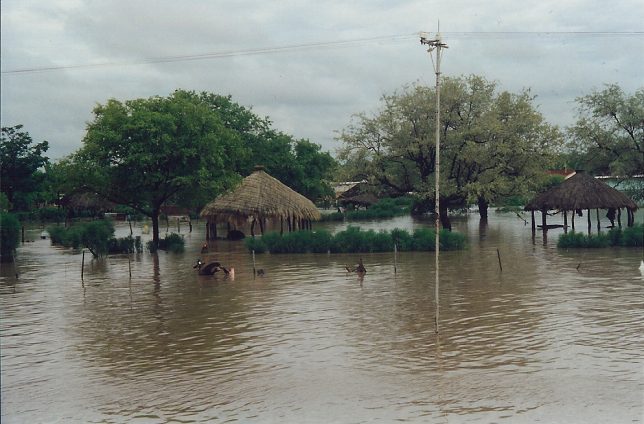
“We need to drastically reduce greenhouse gas emissions and adapt to a new reality where floods and heatwaves are more intense and damaging,” said a co-author of the study.
“If we do not reduce emissions and keep global temperatures below 1.5°C, many extreme weather events will become increasingly destructive.”
By Jessica Corbett, Common Dreams (CC BY-NC-ND 3.0).
Intense rainfall that led to deadly flooding and landslides in South Africa last month was made twice as likely by the human-caused climate crisis, a team of scientists revealed Friday, pointing to the findings as proof of the need to swiftly and significantly curb planet-heating emissions.
Experts at the World Weather Attribution (WWA) initiative found that heavy rainfall episodes like the one in April that left at least 435 people dead can be expected about once every 20 years versus the once every 40 years it would be without humanity warming the planet.
WWA climatologists warn that without successful efforts to dramatically reduce emissions, the frequency and intensity of such extreme events will increase as the global temperature does.
“If we do not reduce emissions and keep global temperatures below 1.5°C, many extreme weather events will become increasingly destructive,” said study co-author Izidine Pinto of the Climate System Analysis Group at the University of Cape Town. “We need to drastically reduce greenhouse gas emissions and adapt to a new reality where floods and heatwaves are more intense and damaging.”
During an April speech announcing a disaster declaration, South African President Cyril Ramaphosa said that communities in the eastern part of the country were “devastated by catastrophic flooding,” noting that it “caused extensive damage to houses, businesses, roads, bridges and water, electricity, rail, and telecommunications infrastructure.”
Ramaphosa also highlighted the death toll, sharing that when he and other officials visited affected families, “they told us heart-breaking stories about children, mothers, fathers, sisters, brothers, grandparents, and neighbors being swept away as their homes crumbled under the pressure of the flood waters.”
The city of Durban was hit particularly hard and its port—the largest in Africa—had to suspend operations because of the extreme weather.
Friederike Otto from Imperial College London, who leads WWA and co-authored the new study, pointed out that “most people who died in the floods lived in informal settlements, so again we are seeing how climate change disproportionately impacts the most vulnerable people.”
“However, the flooding of the Port of Durban, where African minerals and crops are shipped worldwide, is also a reminder that there are no borders for climate impacts,” she added. “What happens in one place can have substantial consequences elsewhere.
Structural vulnerability, a legacy from apartheid, rapid urban growth & climate change turned heavy April rains into a disaster for Durban and surrounding areas – new @wxrisk study https://t.co/6C4grKwWtm pic.twitter.com/7WbaKz9COk
— Dr Friederike Otto (@FrediOtto) May 13, 2022
In addition to the chances of an event such as the mid-April rain disaster doubling due to human-induced climate change, the WWA team found that “the intensity of the current event has increased by 4-8%.”
The New York Times noted that “the work has yet to be peer-reviewed or published, but it uses methods that have been reviewed previously” and “the finding that the likelihood of such an extreme rain event has increased with global warming is consistent with many other studies of individual events and broader trends.”
WWA’s previous work includes a review of last year’s fatal heatwave in the Pacific Northwest, which the scientists concluded would have been “virtually impossible” in a world without the climate emergency.
“Our results provide a strong warning,” that WWA analysis said. “Our rapidly warming climate is bringing us into uncharted territory that has significant consequences for health, well-being, and livelihoods.”
